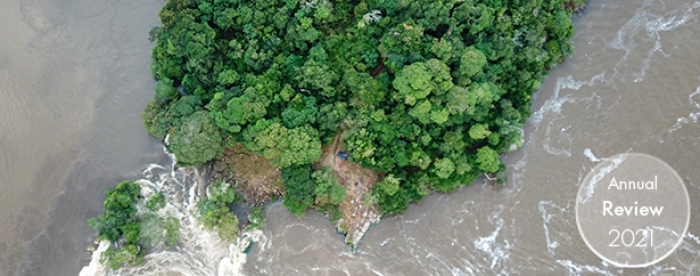News
Our stories ... ...

General - 29 June, 2022
TBI aspires to increase the role of forest and tree-based strategies in national plans to achieve climate change mitigation and adaptation goals, known as Nationally Determined Contributions (NDCs). In 2021 TBI’s efforts started showing the first promising results.
Agroforestry and forestry can help to simultaneously achieve climate change mitigation and adaptation objectives, because trees and forests absorb carbon while also reducing people’s vulnerability to the effects of climate change. In national climate plans, however, forest- and tree-based strategies are often mentioned only in relation to mitigation, focussing on conservation and restoration of forest areas. Little is noted about the sustainable use of trees and forests, and their importance for local people in changing climate conditions. In the view of TBI this is a missed opportunity, especially considering that large parts of the world’s forest lands are assigned to community use.
To support forest- and tree-based strategies for climate objectives, TBI aims to influence Nationally Determined Contributions (NDCs), in which countries document their climate targets and the ways they intend to achieve them. Governments are expected to revise their NDCs every five years, which offers opportunities for improvements. However, it has been difficult for TBI to be involved in these revisions. NDC processes are often coordinated by government agencies, leaving little room for significant inputs from non-governmental actors.
In 2021 several TBI members adapted their NDC-related strategies and stepped up their efforts. This has started to show results. Tropenbos Ghana, for example, facilitated a process through which civil society actors could provide feedback to the NDC, provided a platform for writing the forest sector commitment, and was tasked to write specific sections on community resource management areas and biodiversity conservation. Tropenbos Viet Nam realized it was not able to influence the revision process at the national level, and therefore shifted focus to provincial authorities. This proved to be a smart move, as provincial authorities highly appreciated the help with developing forest- and tree-based plans for NDC implementation. Inspired by the success of Tropenbos Viet Nam, Tropenbos Indonesia is now considering a similar strategy.
Arguably the biggest success was in Bolivia, where TBI’s partner Instituto Boliviano de Investigación Forestal (IBIF) conducted an evaluation of the NDC and was then asked by the government to participate in the review and submission of its new NDC. In this capacity, IBIF managed to include the reduction of wildfires as an explicit ambition in the revised NDC, stressing the need for better fire management. Following IBIF’s recommendations, the government included a section on an implementation mechanism for realizing the NDC ambitions. Moreover, IBIF’s landscape-level work, with a focus on community-based forest management, can function as a showcase for the mitigation and adaptation strategy that is outlined in the revised NDC. In this way, IBIF’s landscape work will help to achieve the ambitions set in the NDC, while at the same time serving as an inspiration for other locations in Bolivia.
In addition to these country-level achievements, the network-wide NDC team developed a method to assess the extent to which current NDCs are effectively addressing the conditions needed to support community forestry. In 2021 the method was successfully piloted in Suriname, and in 2022 it will be implemented in other countries. With the results, TBI aims to improve the NDC development guidelines used by international organizations that support countries with their revisions, such as the NDC partnership. Together, TBI’s national and international efforts should ensure that NDCs provide a boost for locally led forest- and tree-based strategies to achieve climate change mitigation and adaptation goals.

due for release in July 2022